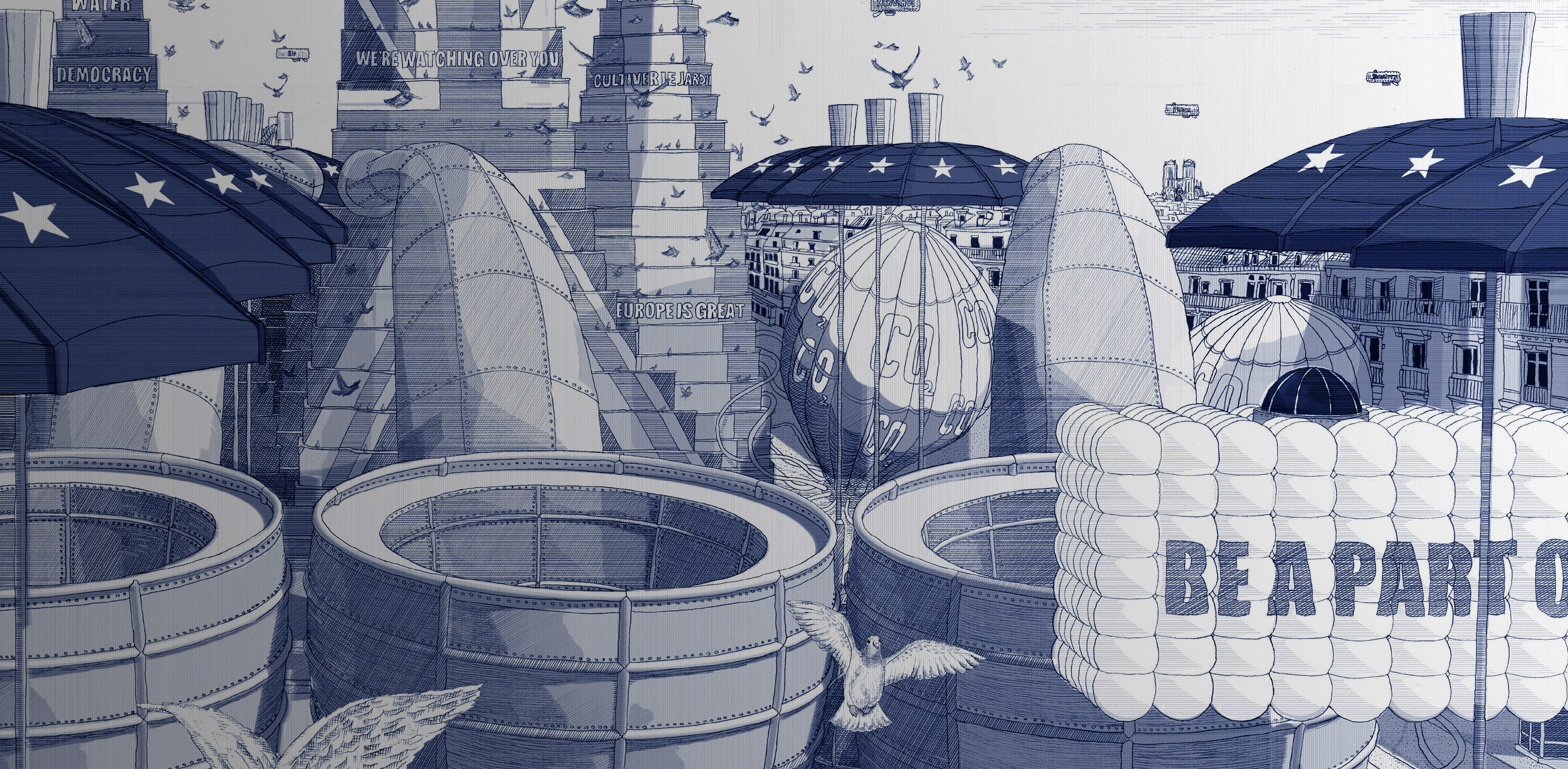Got a great conceptual project of your own? Enter it in the Unbuilt Categories in the 8th Annual A+Awards for a shot at international publication and global recognition. Submit your projects before February 14th to secure a special Early Entry Discount.
January 31st 2020 marks the day that the United Kingdom officially departs the European Union. While those that voted for “Brexit” and those that voted to remain in the bloc have been locked in a bitter row over the repercussions of the decision, they can surely agree that today’s news marks the biggest shift in Britain’s political landscape for a generation.
The only other thing the two sides might agree on is that the country’s post-Brexit future is largely impossible to predict, with speculations about the UK’s prospects ranging from utopian to apocalyptic depending on your viewpoint. Thankfully for those of us in architectural circles, the profession and its students have a penchant for jumping into the unknown and speculating about what comes next.
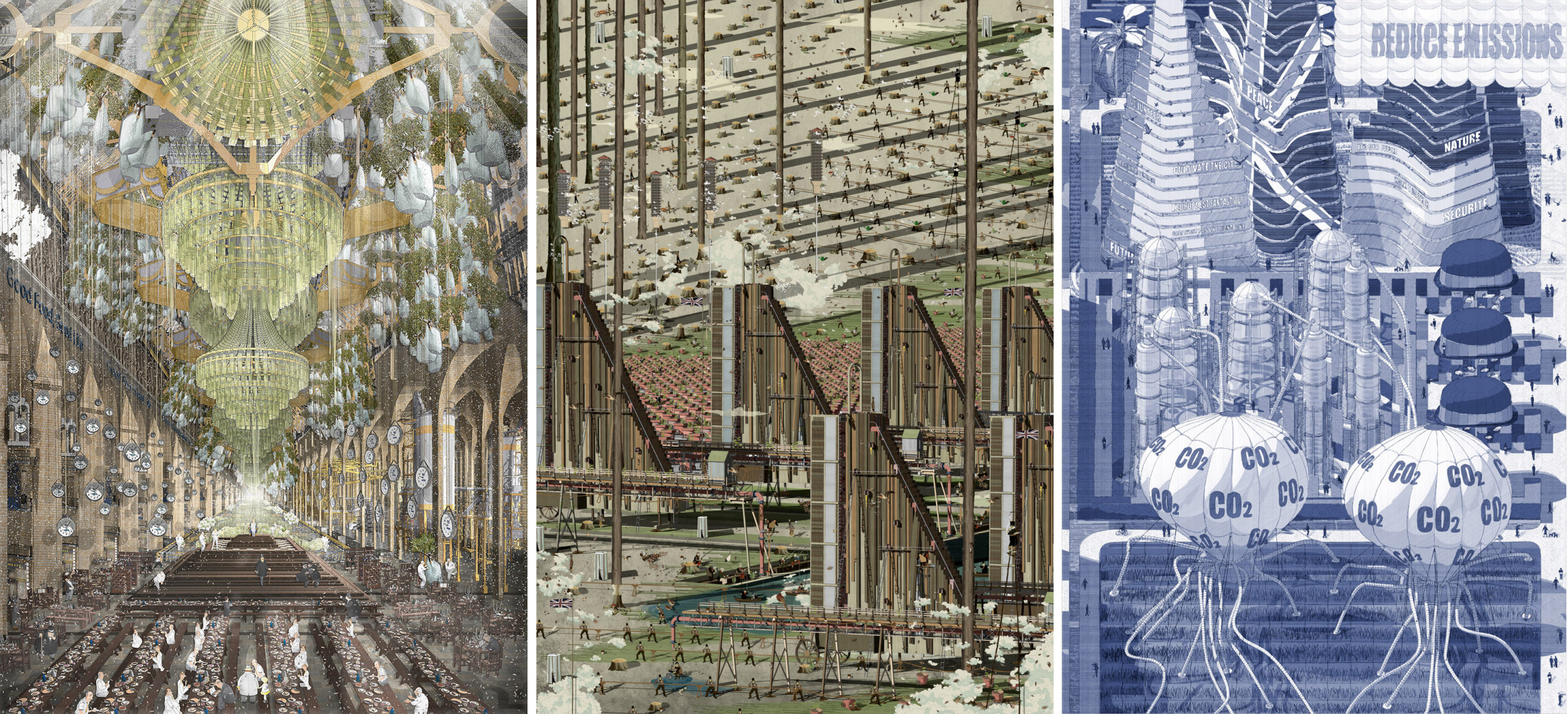
From left to right: “The Sweet Proposal: A Cautionary Tale of The Corporate City” by Elliott Bishop; “Re-imagination of the HS2” by Damien Assini; “European Union: The Gardens of Fantastica” by Steven McCloy
It is therefore unsurprising that there have been numerous thesis projects created on the subject of Brexit, with students taking ‘inspiration’ from the turmoil to create compelling buildings, cities and urban landscapes tied to this polarizing political event.
What might a post-Brexit Britain look like? Just ask students from the Bartlett School of Architecture in London.
In 2018, Elliott Bishop created “The Sweet Proposal: A Cautionary Tale of The Corporate City”, which imagines a private take over of the city of York by confectionary giant Nestlé. Bishop wrote: “The Sweet Proposal of Nestlé’s New York, is a satirical cautionary tale of a corporate city-scaled confectionary factory, a critique of city privatization where the largest corporate infrastructures control our employment, governance, housing and nutrition.”
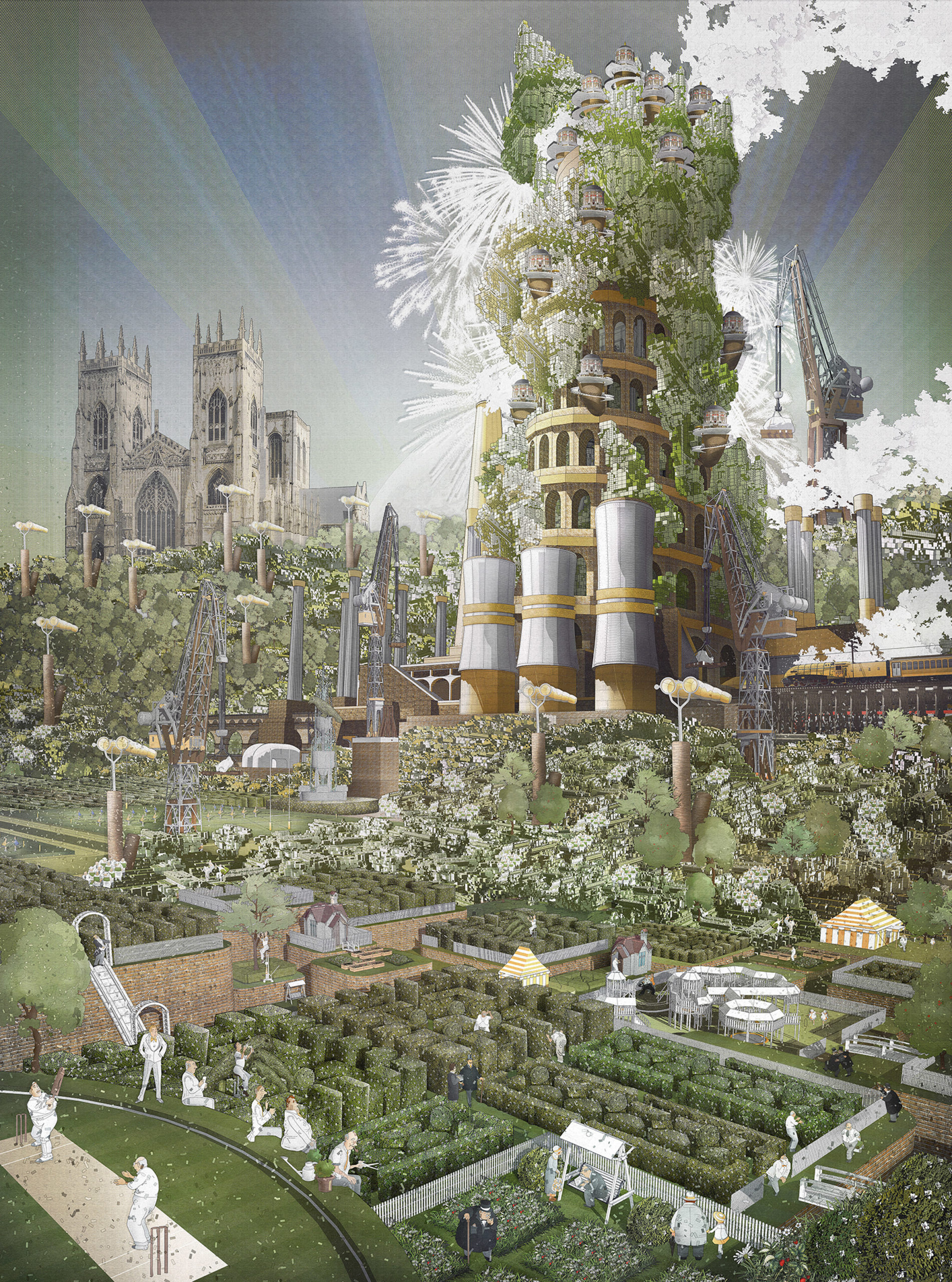
“The Sweet Proposal: A Cautionary Tale of The Corporate City” by Elliott Bishop
The project description continues: “The project converts the city of York into a dystopian corporate utopia vailed in a facade of sweet respectability. [It is] devoted to the production of confection to be exported to Europe, as a new type of corporate colonialism in a post-Brexit Britain.”
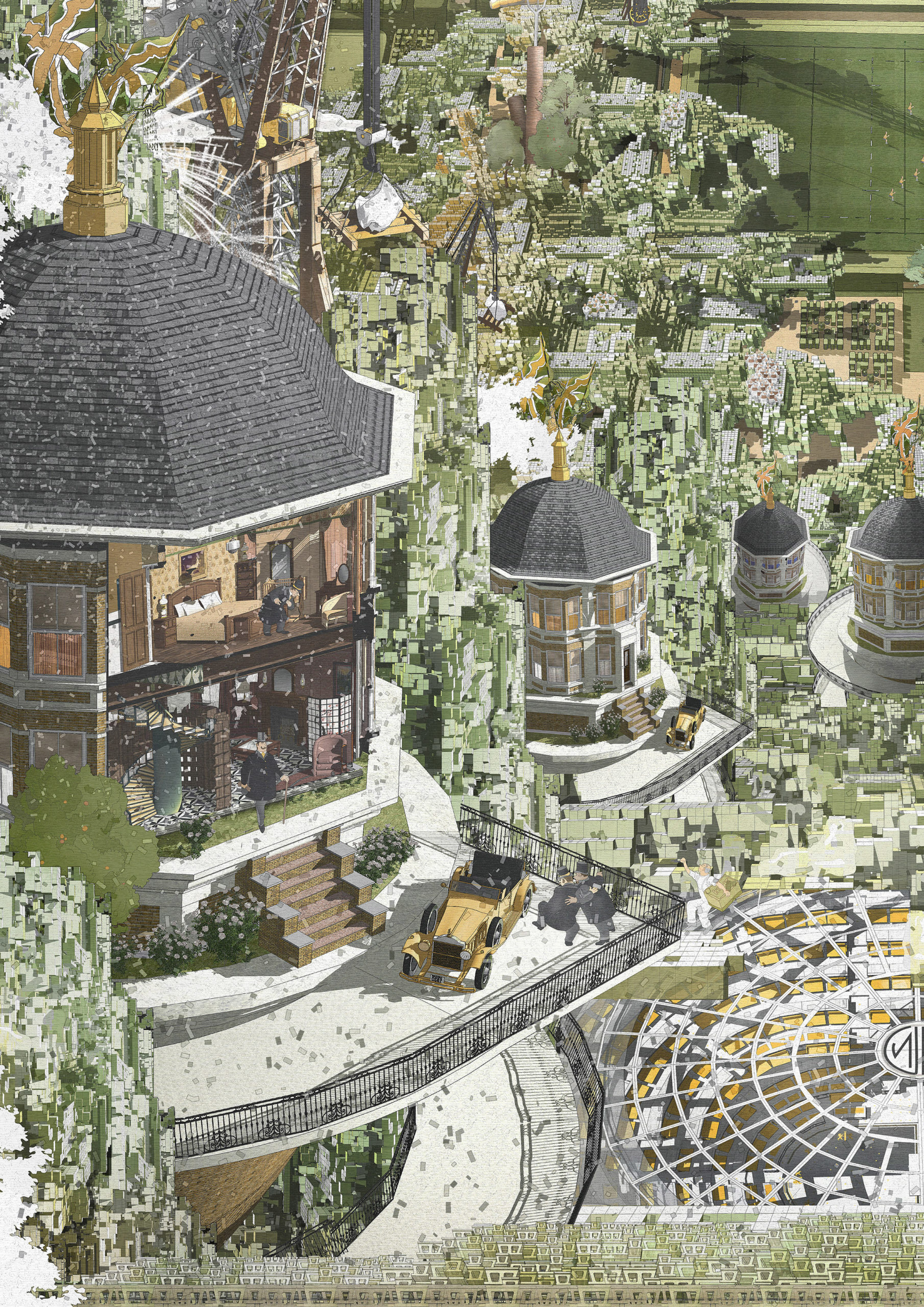
“The Sweet Proposal: A Cautionary Tale of The Corporate City” by Elliott Bishop
According to Dezeen, Bishop’s project takes inspiration from The Great Gatsby, the novel by F Scott Fitzgerald that is set during the economic boom of the 1920s. “The story has been interpreted as a critique of capitalism and modern paternalism of company towns, described between the relationships of the dependant Gatsby — who is represented as the employees — to his selfish love Daisy, the company,” he explained.
In 2017, another Bartlett student, Damien Assini, imagined a slightly more utopian scenario. The astronomical budget for the controversial HS2 railway project is reallocated to create sustainable cities made up otherworldly modular buildings. Assini’s proposal was designed to avoid the “gentrification, displacement or loss of existing city heritage” he believes would result from the construction of HS2.
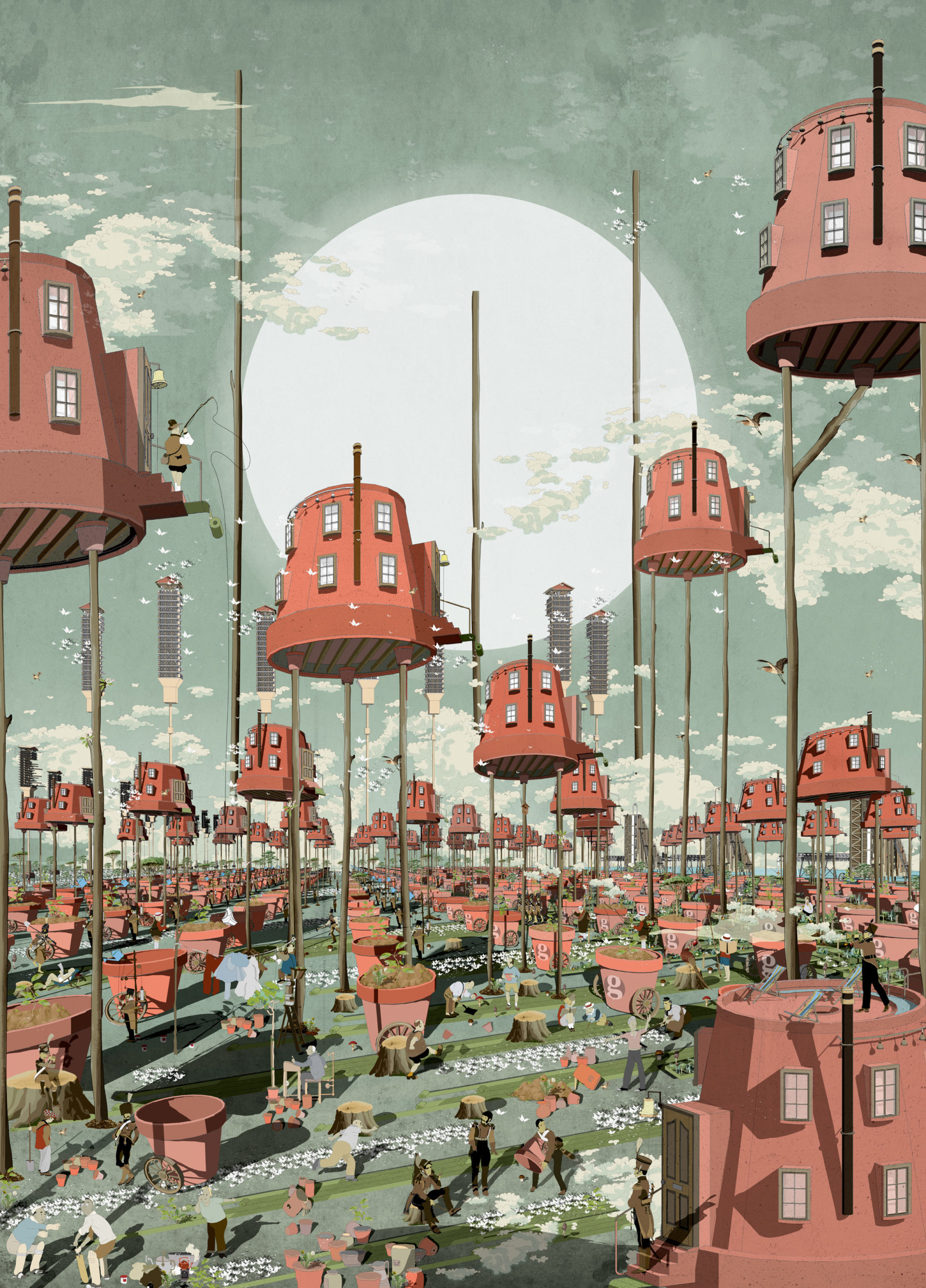
“Re-imagination of the HS2” by Damien Assini
Assini explained: “By reinforcing heritage and creating a new cultural green trading infrastructure across Britain, the route will aim to teach true values of Britishness through nature, local resources and craftsmanship, balancing environmental, social and economic issues.”
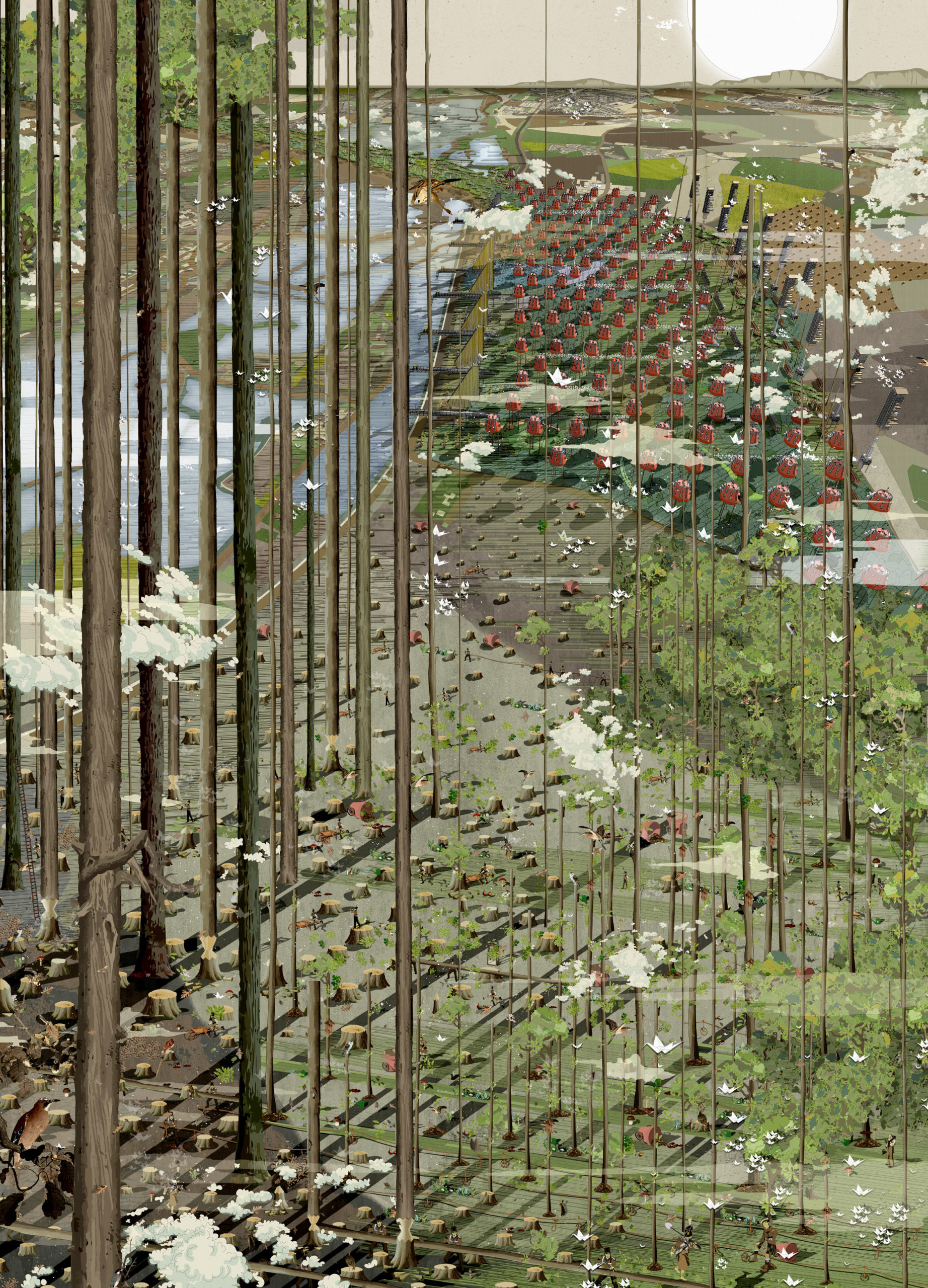
“Re-imagination of the HS2” by Damien Assini
Assini’s model towns comprise timber houses, hospitals and mobile schools, along with green infrastructure such as anaerobic digesters to recycle organic waste and generate green energy.
Before the referendum had even been announced, fellow Bartlett student Eric Wong investigated the possibility of Brexit, creating an illustrated blueprint for a truly united United Kingdom that has the Isle of Man as its capital.
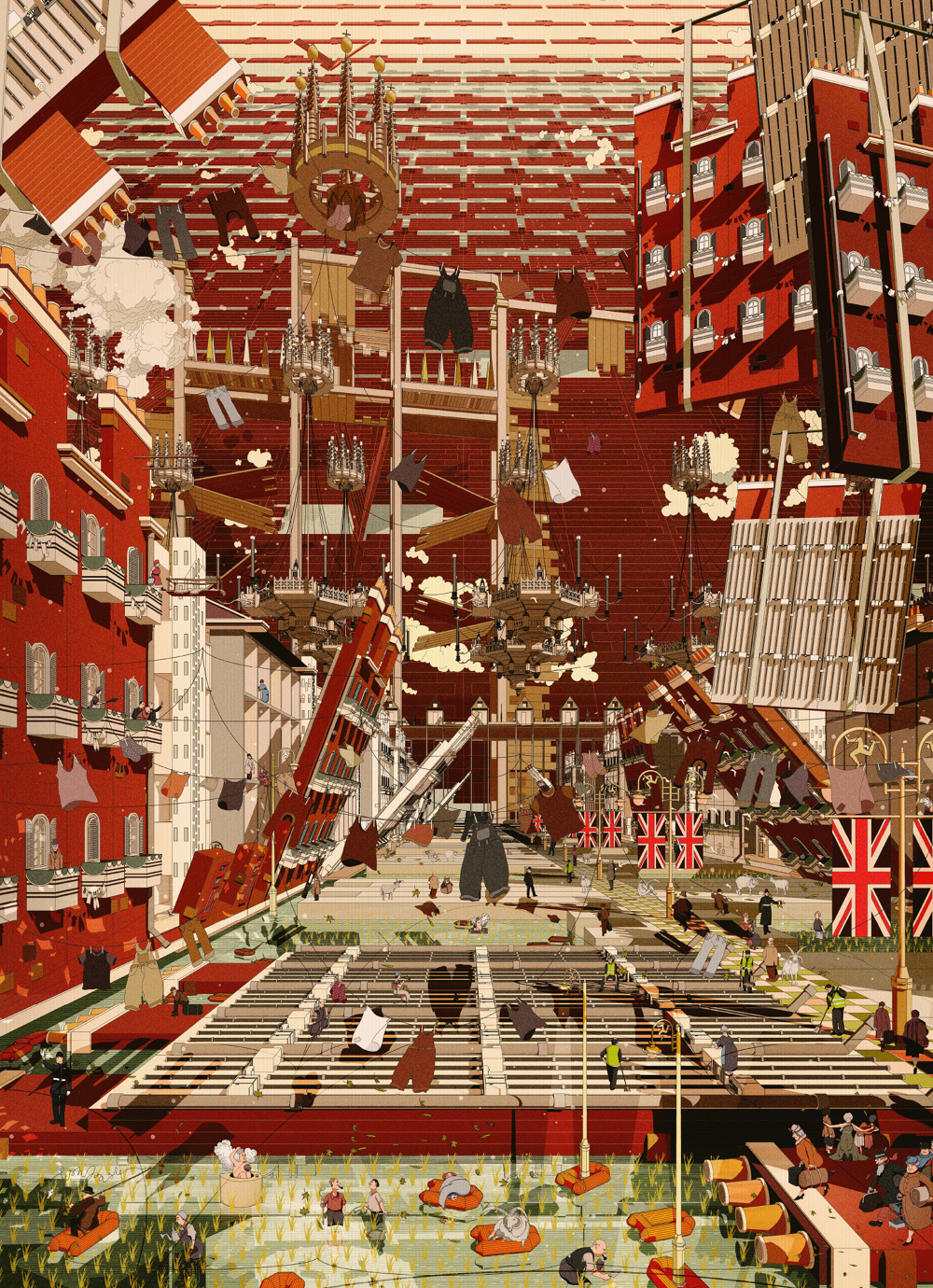
“Cohesion” by Eric Wong
Though technically not a part of the UK — the Isle of Man is a crown dependence is roughly equidistant to London, Cardiff, Belfast and Edinburgh, symbolically connecting the UK’s four nations. In Wong’s proposal, The energy, food, fresh air and clean water produced from the green tectonics and residents of Cohesion are collected at the Royal Mail towers, ready to be distributed and sent back to each of the UK’s 4 isle capitals.
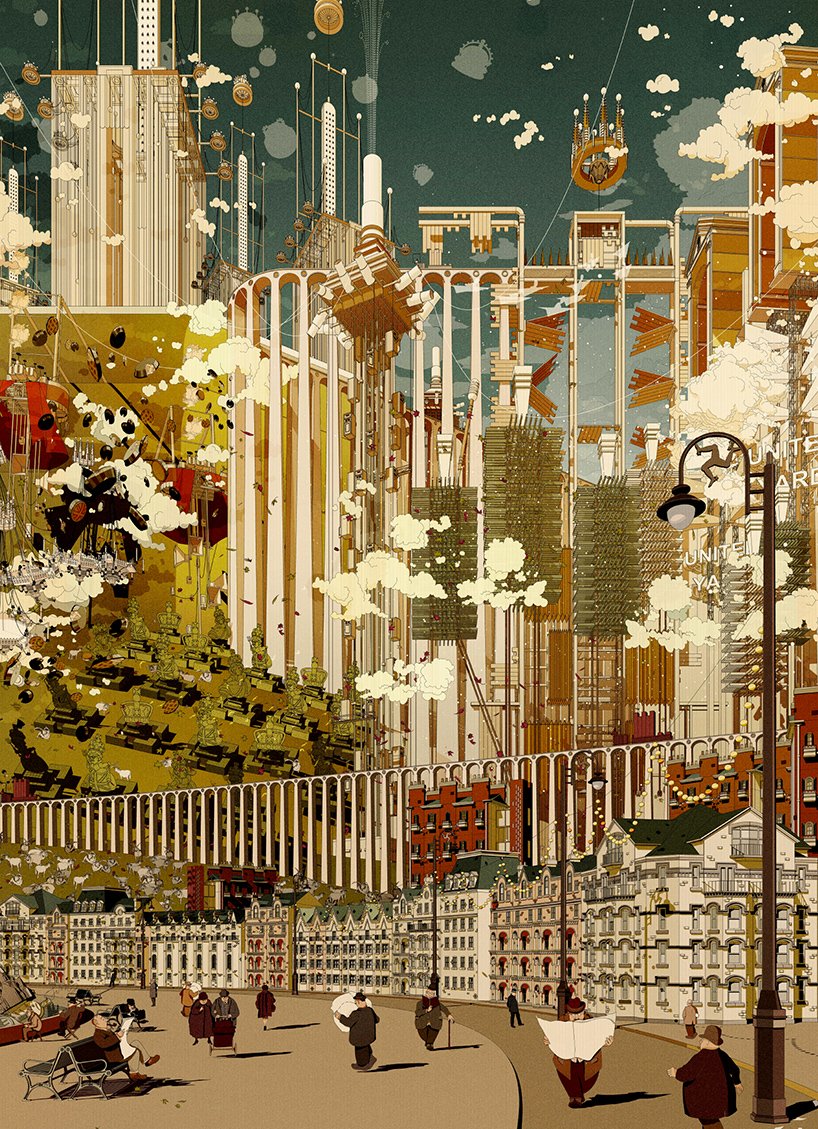
“Cohesion” by Eric Wong
“Relocating Britain’s capital may appear totally fanciful and farfetched, but such a move has been considered in the past to the regions of Lancashire and York — a more geographic centre,’ explained Wong. “The relocation to the Isle of Man would see a radical geographical redistribution of wealth and ease pressures on London’s transport and housing market.”
Finally, back in 2013, Steven McCloy was even further ahead of his time in predicting Brexit-fuelled debates around Europe. As described in Dezeen, McCloy’s project envisioned the EU as a nomadic organization that relocates to a new city every 5 years.
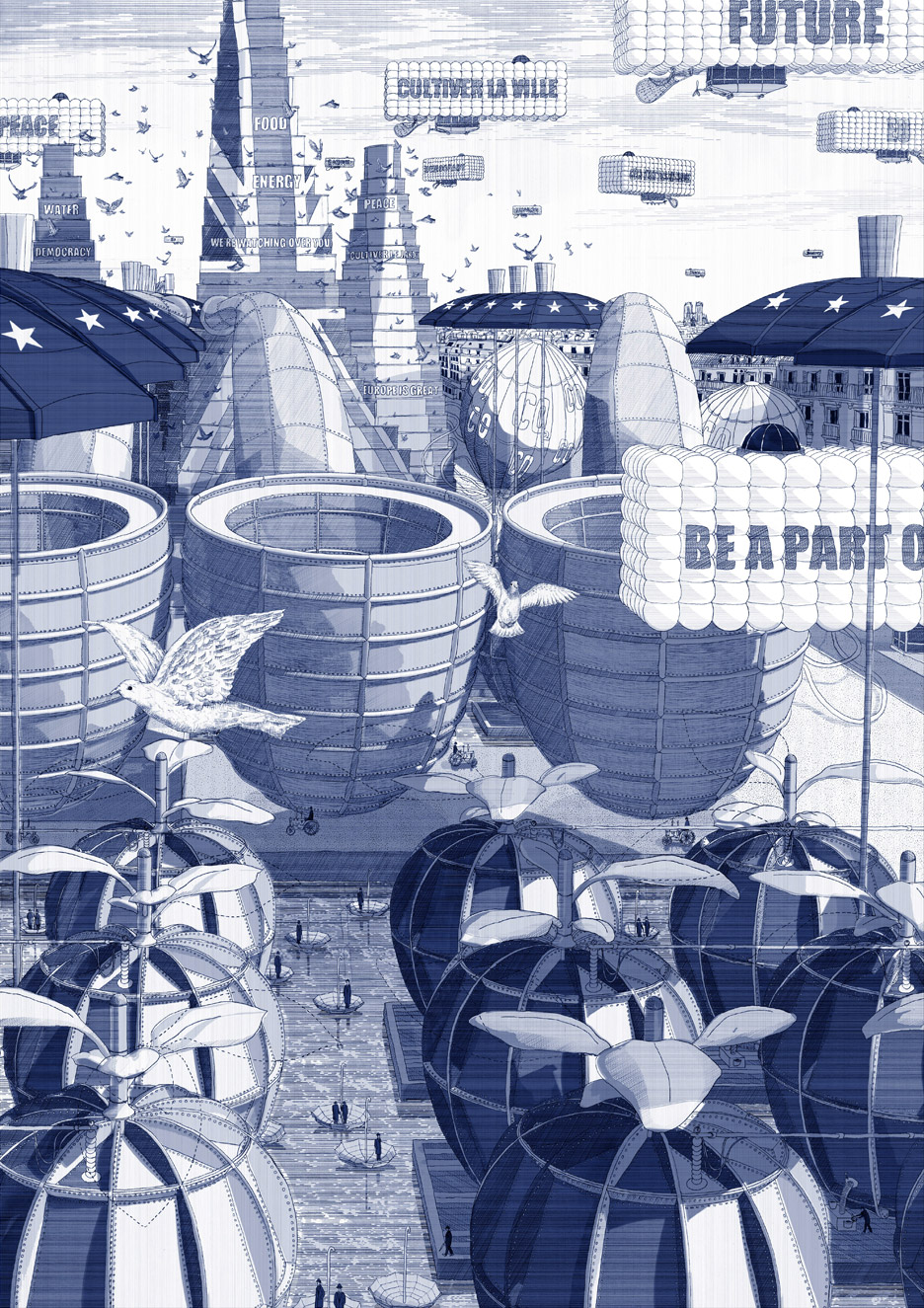
“European Union: The Gardens of Fantastica” by Steven McCloy
The idea behind the proposal was to dismantle the perception of the EU as a financial leech based in Brussels, instead emphasizing its ability to collaborate with member states to address common issues such as climate change. “I am convinced of the importance of collaboration and standing together in the face of adversity,” explained McCloy.
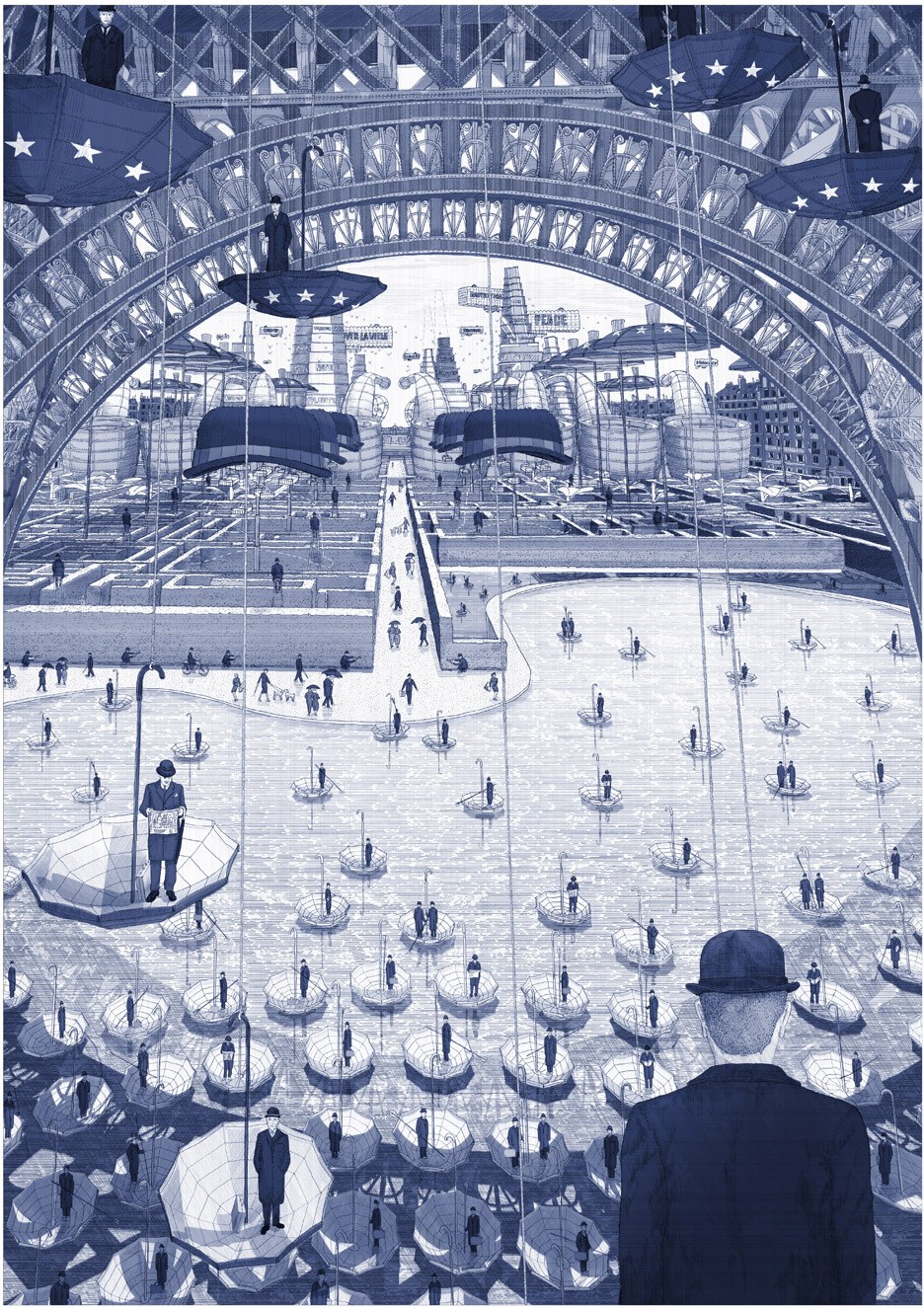
“European Union: The Gardens of Fantastica” by Steven McCloy
Each of the above projects cleverly harnesses fantastical imagery to highlight the correlation between architecture and the socio-economic issues of our time. While they are not realistic, they touch on themes of chaos, unrest and faint hope that are eminently relatable.
Whichever proposal you believe is most accurate, one thing is certain — after today, the relationship between Europe and the UK will never be quite the same again.
Got a great conceptual project of your own? Enter it in the Unbuilt Categories in the 8th Annual A+Awards for a shot at international publication and global recognition. Submit your projects before February 14th to secure a special Early Entry Discount.
Top image: “Cohesion” by Eric Wong
